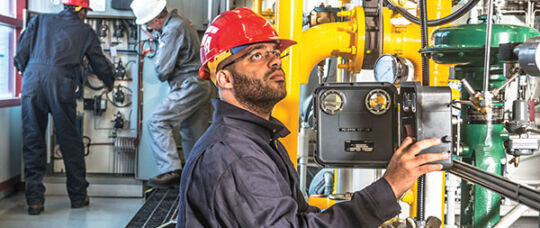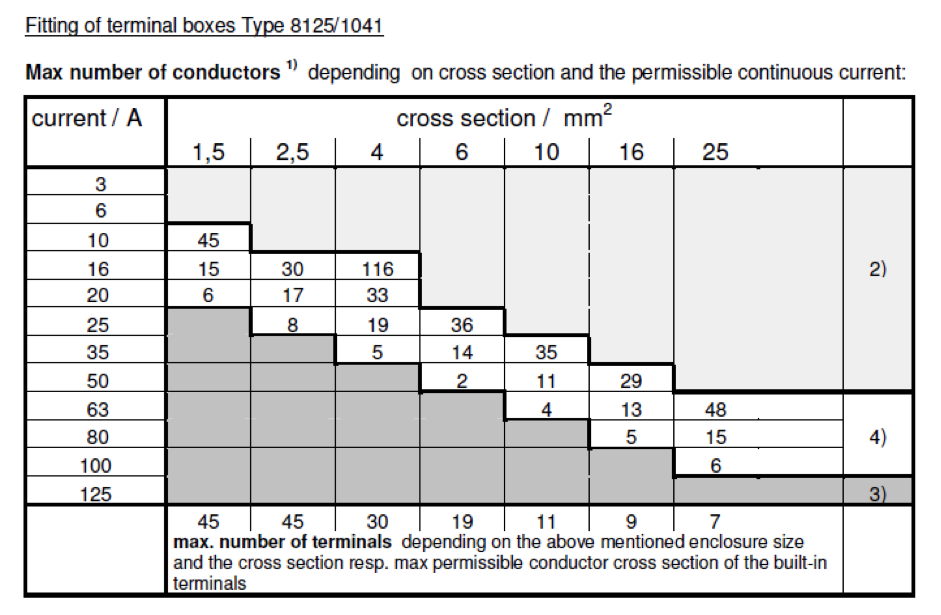Roar Solutions Can Be Fun For Everyone
Roar Solutions Can Be Fun For Everyone
Blog Article
Some Ideas on Roar Solutions You Should Know
Table of Contents9 Easy Facts About Roar Solutions ShownAll About Roar SolutionsThe Best Guide To Roar Solutions
In such an ambience a fire or surge is possible when 3 basic conditions are satisfied. This is often described as the "harmful area" or "combustion" triangular. In order to protect setups from a potential surge a method of evaluating and classifying a possibly harmful location is called for. The purpose of this is to make certain the right option and installation of devices to inevitably stop a surge and to make certain safety of life.
(https://www.openstreetmap.org/user/roarsolutions)
No tools ought to be mounted where the surface area temperature level of the tools is above the ignition temperature level of the provided hazard. Below are some typical dirt harmful and their minimal ignition temperature level. Coal Dirt 380C 225C Polythene 420C (melts) Methyl Cellulose 420C 320C Starch 460C 435C Flour 490C 340C Sugar 490C 460C Grain Dust 510C 300C Phenolic Material 530C > 450C Aluminium 590C > 450C PVC 700C > 450C Residue 810C 570C The probability of the threat existing in a concentration high adequate to create an ignition will vary from area to area.
In order to categorize this threat a setup is divided right into locations of risk depending upon the amount of time the dangerous is present. These locations are referred to as Zones. For gases and vapours and dusts and fibers there are 3 areas. Zone 0 Area 20 A harmful environment is very likely to be existing and may exist for extended periods of time (> 1000 hours annually) and even constantly Zone 1 Zone 21 A harmful atmosphere is feasible yet unlikely to be present for lengthy periods of time (> 10 450 C [842 F] A classification of T6 suggests the minimum ignition temperature level is > 85 C [185 F] Dangerous location electrical equipment maybe developed for usage in greater ambient temperatures. This would certainly showed on the rating plate e.g. EExe II C T3 Ta + 60C( This suggests at 60C ambient T3 will not be gone beyond) T1 T1, T2, T3, T4, T5, T6 T2 T2, T3, T4, T5, T6 T3 T3, T4, T5, T6 T4 T4, T5, T6 T5 T5, T6 T6 T6 A T Class rating of T1 indicates the optimum surface temperature produced by the instrument at 40 C is 450 C. Presuming the associated T Class and Temperature level rating for the devices are ideal for the area, you can always utilize an instrument with a more rigid Division ranking than needed for the area. There isn't a clear solution to this question regrettably. It really does depend on the sort of equipment and what repairs require to be executed. Equipment with specific examination treatments that can't be done in the field in order to achieve/maintain 3rd event rating. Have to come back to the factory if it is before the devices's solution. Area Repair By Authorised Personnel: Complex screening may not be required however specific procedures may need to be adhered to in order for the equipment to maintain its third event rating. Authorized employees need to be utilized to do the job correctly Repair work should be a like for like replacement. New component must be considered as a direct substitute needing no unique testing of the tools after the repair work is full. Each tool with a hazardous rating ought to be assessed separately. These are laid out at a high degree below, however, for more thorough info, please refer straight to the guidelines.
Roar Solutions - The Facts
The tools register is a comprehensive database of devices documents that includes a minimum collection of fields to determine each thing's place, technical criteria, Ex lover category, age, and environmental data. The ratio of Comprehensive to Shut evaluations will be figured out by the Tools Risk, which is evaluated based on ignition danger (the probability of a source of ignition versus the possibility of a combustible ambience )and the unsafe area classification
( Zone 0, 1, or 2). Carrying out a durable Risk-Based Assessment( RBI )technique is important for guaranteeing conformity and security in handling Electrical Tools in Hazardous Locations( EEHA).
10 Simple Techniques For Roar Solutions

In terms of explosive threat, a hazardous area is a setting in which an explosive environment exists (or may be anticipated to be present) in quantities that require special safety measures for the building and construction, installment and use equipment. eeha training. In this post we check out the obstacles faced in the workplace, the threat control actions, and the called for proficiencies to work securely
It is a repercussion of modern life that we make, store or handle a series of gases or fluids that are regarded combustible, and an array of dirts that are deemed flammable. These materials can, in particular conditions, form explosive atmospheres and these can have major and tragic consequences. A lot of us recognize with the fire triangular eliminate any type of among the three elements and the fire can not take place, yet what does this mean in the context of unsafe areas? When damaging this down into its simplest terms it is essentially: a mix of a certain quantity of release or leak of a particular material or material, blending with ambient oxygen, and the visibility of a resource of ignition.
In the majority of instances, we can do little regarding the degrees of oxygen in the air, however we can have significant impact on resources of ignition, for instance electric devices. Harmful areas are documented on the unsafe location classification drawing and are determined on-site by the triangular "EX LOVER" indication. Below, among various other helpful hints vital information, zones are divided right into 3 kinds depending on the danger, the probability and duration that an eruptive atmosphere will certainly exist; Zone 0 or 20 is deemed the most hazardous and Zone 2 or 22 is deemed the least.
Report this page